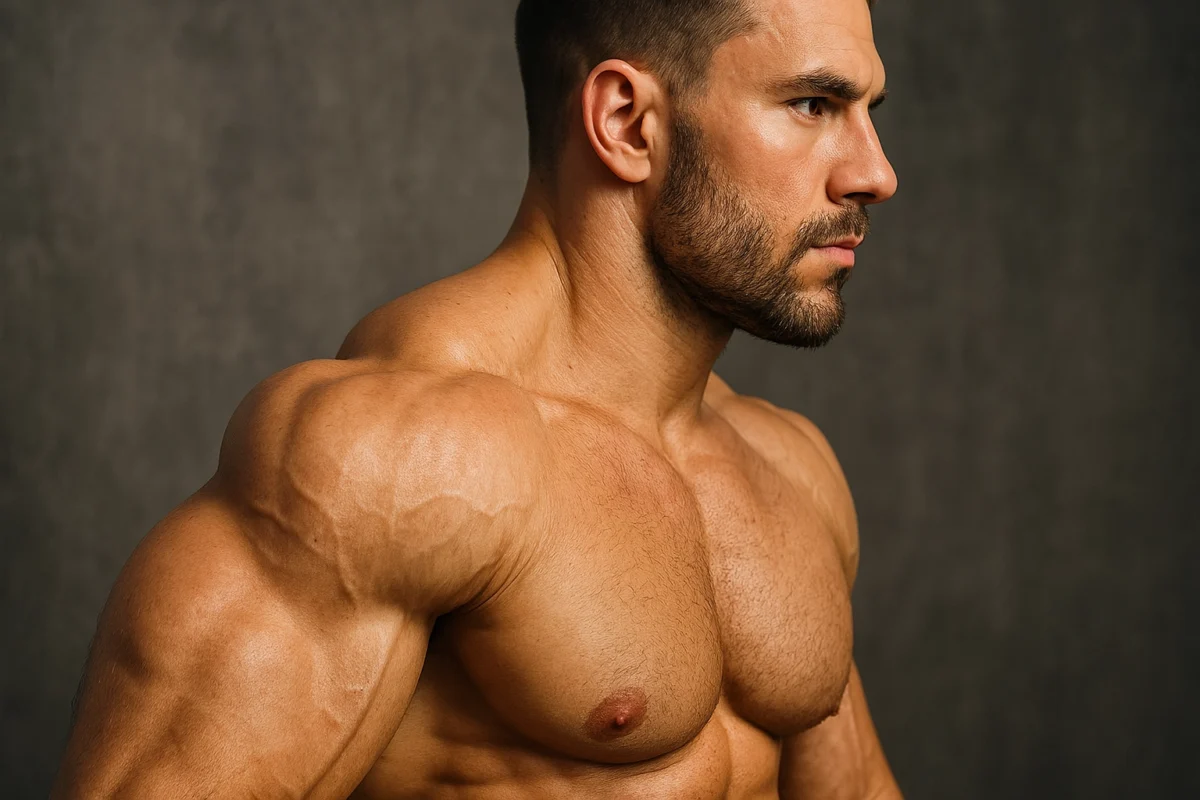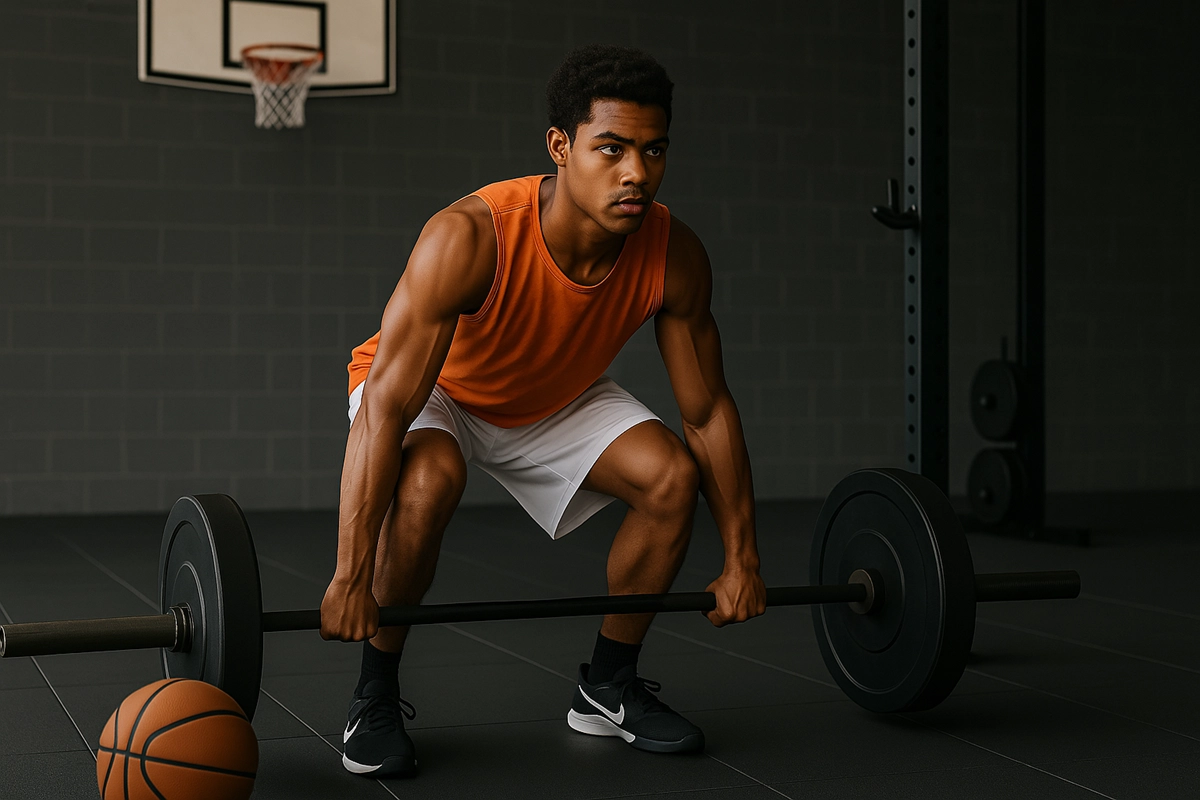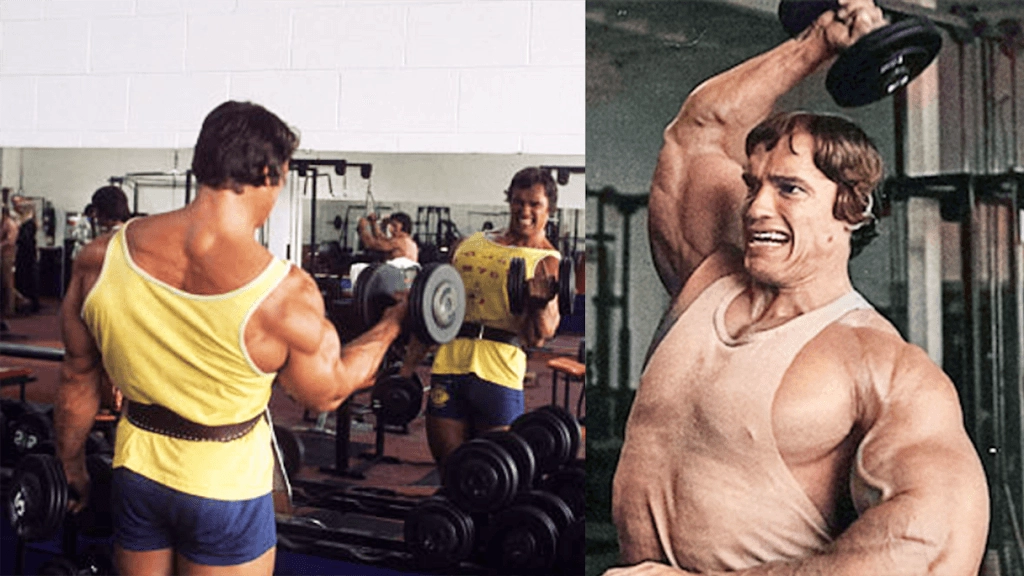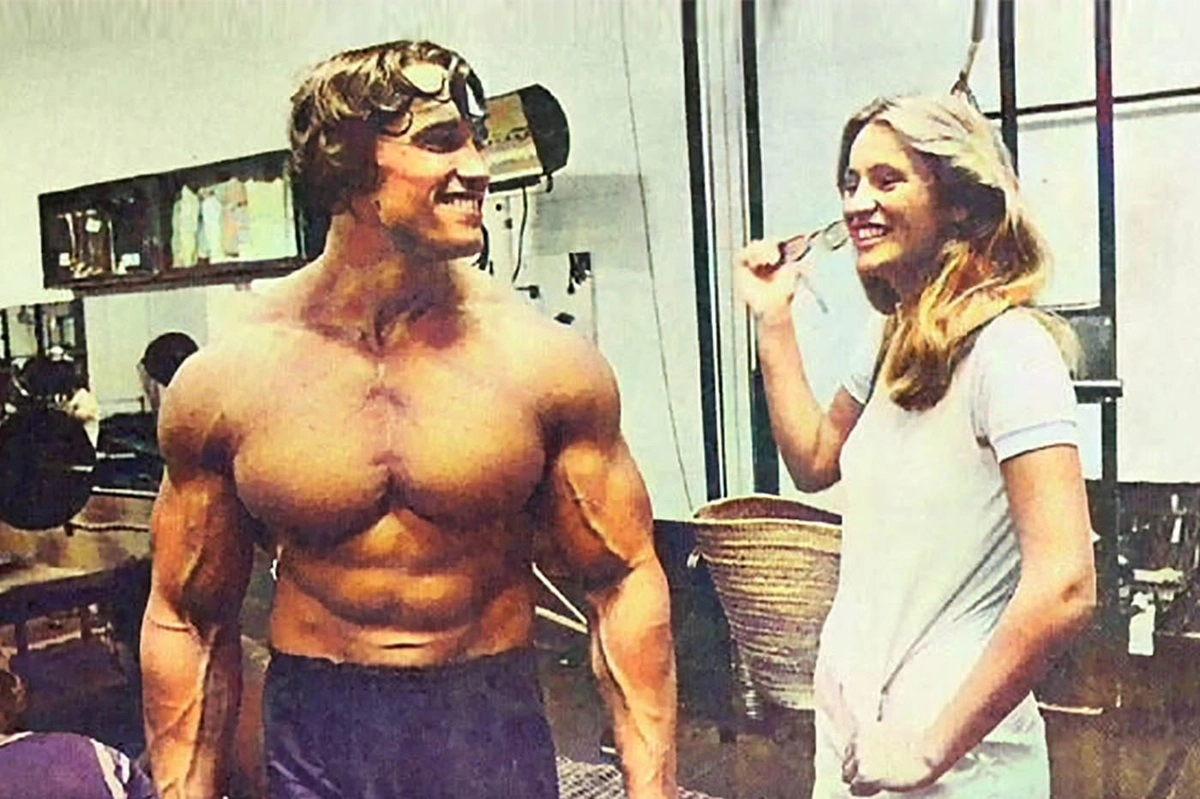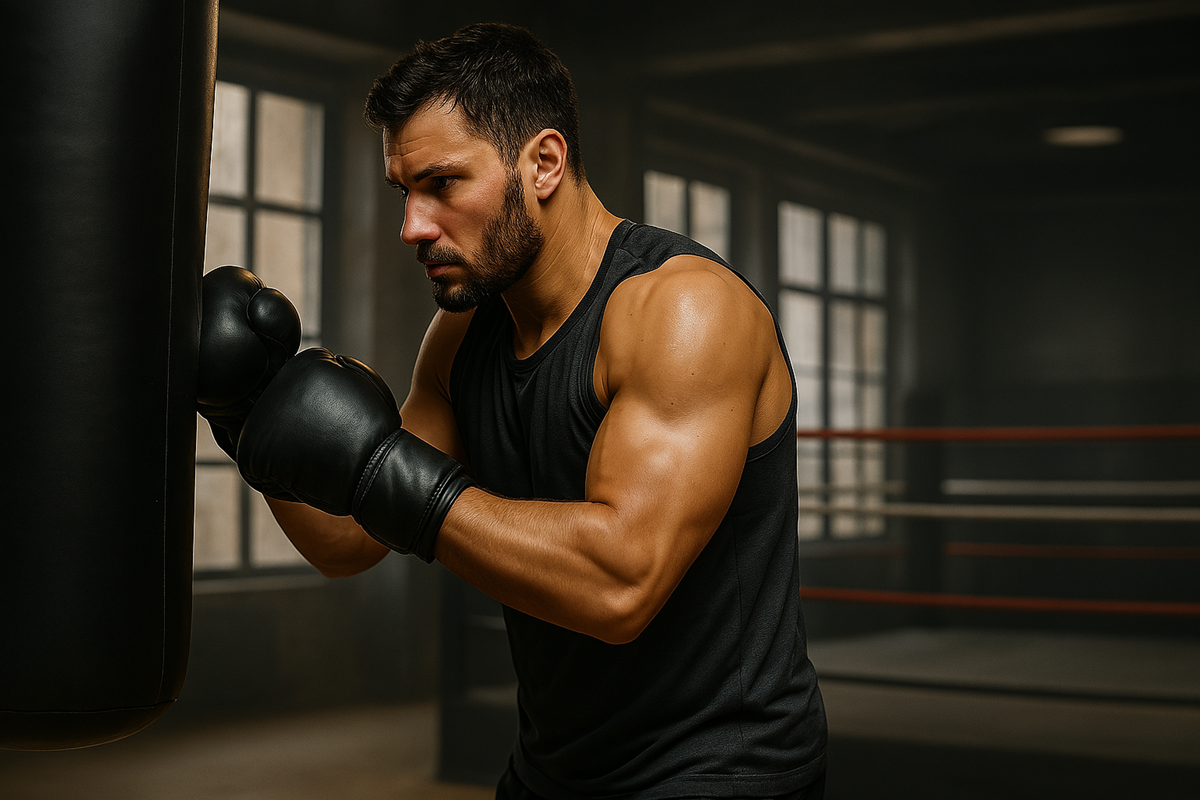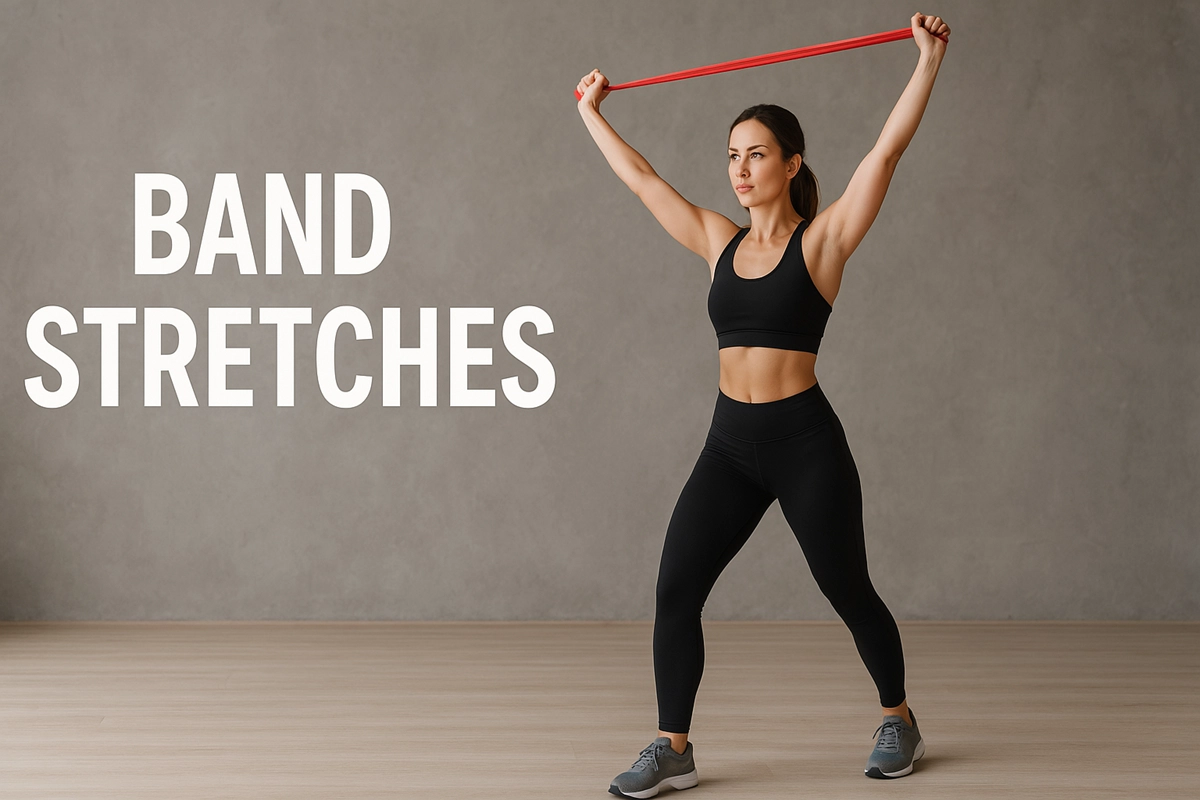You’re about to discover the most effective shoulder exercises that’ll transform your upper body development.
Whether you’re training like Arnold did during his golden era or following modern science-backed protocols, these movements target all three heads of the deltoids for maximum growth.
From the explosive power of the push-press to the intricate isolation of lateral raises, each exercise serves a specific purpose in building broader, stronger shoulders that command attention.
Anatomy of the Shoulder
A well-built shoulder consists of three distinct deltoid heads working in harmony with supporting muscles and joints.
You’ll find the anterior (front), lateral (middle), and posterior (rear) deltoid muscles performing different movements that shape your shoulders. These deltoid muscles work together with your rotator cuff muscles, which stabilize your shoulder joint during exercises.
Your shoulder joint’s mobility relies on proper function of the scapular muscles, including the trapezius and serratus anterior.

Arnold Schwarzenegger often emphasized that shoulder development requires hitting all three deltoid heads with equal intensity. To build “cannonball delts” like Arnold’s, you’ll need to understand how these muscles work together.
The rotator cuff muscles – supraspinatus, infraspinatus, teres minor, and subscapularis – protect your shoulder joint during heavy pressing movements.
Top 10 Shoulder Exercises
You’ll find that these cornerstone shoulder exercises are essential for building massive delts, just as Arnold discovered during his golden era of bodybuilding.
The push-press and military press target your anterior deltoids while developing explosive power, whereas the rear delt row specifically strengthens your often-neglected posterior deltoids.
The seated variations with dumbbells and barbells allow for controlled movement patterns and progressive overload, making them perfect for both beginners and advanced lifters seeking serious shoulder development.
1. Push-Press
When it comes to maximizing shoulder development, the push-press stands out as one of the most effective compound movements in your arsenal.
You’ll be able to load heavier weights and perform more reps than traditional overhead exercises, engaging your entire body while emphasizing shoulder strength training.
The push-press isn’t just a shoulder exercise – it’s a total-body power movement that recruits your lower body, core, delts, triceps, and upper pecs.

You’ve got several variations to choose from:
- Barbell push-press
- Dumbbell clean and push-press
- Kettlebell push-press
- Front squat push-press
- Dumbbell thruster
For optimal muscle growth, perform this exercise first in your workout, following a thorough warm-up.
Stick to 3-4 sets of 6-8 reps, and always maintain proper form over weight.
2. Military Press
The military press reigns supreme as one of bodybuilding’s most iconic shoulder exercises, building on the explosive power of the push-press with a stricter form that enhances deltoid development. You’ll target all three deltoid heads while engaging essential core muscles to maintain shoulder stability and protect your spine.
While barbell variations remain popular, research indicates that dumbbells produce greater muscle activation. You’ve got several options to choose from:
- Standing military press
- Dumbbell shoulder press (double-arm, single-arm, or alternating)
- Dumbbell rotational press
- Double-kettlebell press
For optimal shoulder health, maintain neutral hips and learn proper core bracing techniques.

Begin with a challenging yet manageable weight after completing thorough warm-ups. Try 5×5 sets for strength and muscle, or 6-8 reps for pure size gains.
Just remember: your last rep should be tough, but never compromise form.
3. Rear Delt Row
Surprisingly effective for shoulder development, rear delt rows have earned their place among the top shoulder-building movements despite being traditionally categorized as a back exercise.
They’re essential for maintaining proper shoulder function and preventing muscle imbalances, with research showing that they activate the posterior deltoid more effectively than many traditional shoulder exercises.
Physical therapist John Rusin recommends performing rowing movements 2-3 times more frequently than pressing to optimize muscle strength and shoulder health.
You’ve got two excellent variations to choose from:
- Incline dumbbell row
- Bent-over dumbbell rear delt row
For best results, incorporate rear delt rows after your pressing movements.

Aim for 8-10 reps when strength training, or 10-12 reps when focusing on muscle growth and development.
This exercise’s ability to target multiple deltoid heads makes it invaluable for complete shoulder development.
4. Seated Dumbbell Press
Moving from rear work to pressing power, seated dumbbell presses stand as Arnold Schwarzenegger’s favorite shoulder builder—and for good reason. This exercise targets your deltoids with unmatched precision while promoting balanced development through independent arm movement.
You’ll notice the seated dumbbell press offers a more extended range of motion than its barbell counterpart, maximizing your potential for muscle growth and enhancing shoulder mobility. By performing this movement seated, you’re eliminating lower body assistance, forcing your shoulders to handle all the work.

For optimal results, place this exercise at the beginning of your shoulder workout. Aim for 6-8 heavy reps, and don’t hesitate to ask for a spotter, especially when pushing near failure.
5. Seated Barbell Press
While dumbbells offer independence, seated barbell presses reveal new strength potential by letting you move heavier weights through a fixed plane of motion. If you’re new to this exercise, start with a PVC pipe to master proper form before adding weight.
The rack setup allows precise control over your range of motion, making it ideal for any shoulder conditioning program.

For maximum muscle control, incorporate these variations into your exercise plan:
- Traditional seated military press
- Smith machine shoulder press
- Smith machine behind-the-neck press (if mobility allows)
- Machine shoulder press variations
Start your workout with challenging sets of 6-8 reps using heavier weights. This movement builds solid mass when performed correctly – just ask Arnold, who credited barbell presses for developing his legendary deltoid development.
6. Upright Row
The upright row stands as a powerful shoulder-building movement, though proper form makes all the difference between success and potential injury. To maximize deltoid activation while avoiding shoulder problems, take a wider grip, approximately shoulder-width or slightly wider.
Unlike the traditional close grip that can cause internal rotation issues, a wider grip allows your upper arms to move directly outward.

You’ve got several variations to choose from:
- Barbell upright rows
- Dumbbell rows (single or double-arm)
- Cable upright rows
- Smith machine variations
Don’t place this exercise first in your workout routine. Instead, perform it after your pressing movements, aiming for 8-10 reps per set.
You can superset it with front raises or use it as a finishing move to intensify your shoulder burn.
7. Arnold Press
Named after bodybuilding legend Arnold Schwarzenegger, this ingenious press variation has earned its place among the most effective shoulder exercises ever created. By combining traditional pressing with rotational movement, you can target both the front and middle deltoids while promoting healthy joint mobility.
What sets the Arnold press apart is its shoulder-friendly nature, making it easier on your rotator cuff compared to standard overhead presses.

You can perform it:
- Seated for maximum stability
- Standing for full-body power development
- Single-leg for core engagement
For best results, start your shoulder workout with 4 sets:
- 12 reps (lighter weight)
- 10 reps (moderate weight)
- 8 reps (heavier weight)
- 6 reps (heaviest weight)
Keep your shoulder blades pulled back and maintain control throughout the rotating motion.
8. Rear Delt Fly
Building balanced shoulders requires giving extra attention to your rear deltoids, an often-neglected muscle group that’s essential for both aesthetics and function.
Your posterior deltoids and rotator-cuff health depend on proper rear delt training to maintain shoulder stability and posture.
When performing the rear delt fly, you’ve got two effective options. You can either do a freestanding bent-over version with dumbbells or rest your head on a bench for added stability.

If you’re using a pec-deck machine, opt for a neutral or palms-in grip to maximize engagement of the posterior chain.
For best results, perform this exercise toward the end of your shoulder workout. Aim for 10-12 controlled reps per set, and don’t forget – swinging or using momentum won’t build the targeted muscle.
You can also superset it with lateral raises for an intense finish that targets the shoulders.
9. Lateral Raise
Moving beyond rear delt training, you’ll want to master lateral raises—a cornerstone movement that Arnold himself credited with developing his iconic “boulder shoulders.”
While appearing deceptively simple, lateral raises target your middle deltoids with laser-like precision and demand perfect form for maximum results.
To properly execute this move, lead with your elbows and stop when your arms are at about a 30-degree angle from your sides. For those with shoulder arthritis, the cable lateral raise variation offers more controlled resistance.

Whether using dumbbells or a weight machine, aim for 8-10 reps per set to activate your teres minor and surrounding muscles effectively.
For optimal outcomes during your exercise sessions, place lateral raises first if you’re prioritizing medial delt development, or last if focusing on front or rear shoulders.
10. Front Raise
Three key points distinguish the front raise from other shoulder movements: its laser focus on the anterior deltoid, its versatility across equipment choices, and its status as a finishing exercise rather than a primary mass builder.
You’ll find the most benefit from single-sided variations of the front raise. Whether you’re using dumbbells or a cable machine, working one arm at a time enhances your mind-muscle connection and guarantees balanced development.

If you opt to include front raises in your shoulder workout, place them toward the end of your session.
Here are the most effective variations:
- Single-arm cable front raise
- Alternating dumbbell front raise
- Resistance bands front raise
Best Shoulder Workouts
You’ll find three distinct shoulder workouts that cater to different training styles and experience levels: a heavy-duty regimen for maximum muscle gains, a foundational program perfect for beginners, and a machine-focused routine that’ll give you an incredible pump.
Whether you’re training like Arnold in his prime or just starting your fitness journey, these workouts provide the structure you need to build impressive deltoids. Each exercise targets all three heads of the shoulder—anterior, lateral, and posterior—ensuring complete development while allowing for proper recovery between sessions.
#Hard and Heavy Shoulder Workout
When it comes to building massive shoulders, this intense workout combines classic free-weight movements with proven principles for building mass.
You’ll start with heavy push-press sets that build explosive power while targeting your anterior deltoids. Then, you’ll move to the Arnold press, named after the bodybuilding legend himself, which hits all three heads of your shoulders through a unique rotating motion.
The workout continues with incline dumbbell rows to strengthen your rear deltoids, followed by dumbbell lateral raises that’ll give your shoulders that coveted cap-like appearance.
You’ll perform each exercise with specific rep ranges and rest periods, ensuring maximum muscle stimulation. This old-school approach emphasizes quality over quantity, focusing on heavy weights and proper form to trigger serious shoulder growth.
#Beginner Shoulder Workout
Starting your shoulder training journey doesn’t require complex routines or endless exercises to build impressive deltoids. As a beginner, you’ll want to focus on three key movements that target all heads of the shoulder effectively.
Begin with the seated dumbbell shoulder press, performing 4 sets of 8-10 reps with a 2-minute rest between sets. This compound movement builds overall shoulder strength and mass.
Follow this with a superset that combines dumbbell lateral raises and seated rear deltoid flies, both performed for 3 sets of 12 reps. These isolation exercises specifically target your side and rear deltoids.
#Machine Pump Shoulder Workout
Machine-based shoulder training delivers an exceptional muscle pump while maintaining strict form and constant tension.
This machine pump workout targets all three deltoid heads through controlled movements and constant resistance.
Start with four sets of machine shoulder presses for 10-12 reps, adding a dropset on your final set.
Move to single-arm cable lateral raises, performing 4 sets per side with minimal rest between arms.
Follow the same pattern with single-arm cable front raises, focusing on a controlled tempo and peak contraction.
Finish your session with reverse flyes on the pec-deck machine for 4 sets of 12 reps.
Remember to perform dropsets on your final set of each exercise.
This workout’s high-rep approach, combined with dropsets, will create maximum muscle tension and a growth-stimulating pump.
To Wrap It All Up
Building powerful shoulders isn’t just about lifting heavy – it’s about lifting smart. You’ll need to target all three deltoid heads through a combination of compound and isolation movements, while maintaining proper form.
Whether you’re a beginner using light dumbbells or an advanced lifter channeling your inner Arnold with heavy military presses, consistency and progressive overload will transform your shoulders from ordinary to extraordinary.
FAQs
What Are the Best Shoulder Exercises for Beginners?
The best shoulder exercises for beginners are dumbbell shoulder press, lateral raises, and front raises. These exercises build strength in the deltoids and stabilising muscles. Start with light weights, perform 3 sets of 10-12 reps each, and maintain proper form to prevent injury.
How Often Should You Do Shoulder Exercises?
Do shoulder exercises 2-3 times per week to build strength and allow muscle recovery. Rest at least 48 hours between sessions to avoid overtraining and injuries. Adjust frequency based on workout intensity and overall training program goals.
What Are Shoulder Mobility Exercises?
Shoulder mobility exercises include arm circles, wall slides, and doorway stretches. These movements increase range of motion, reduce stiffness, and prepare the shoulder joint for workouts. Perform them during warm-ups or rehabilitation routines.
Best Shoulder Exercises for Building Mass
Build shoulder mass with overhead barbell press, dumbbell lateral raises, Arnold press, and rear delt flyes. Use progressive overload by increasing weight gradually. Perform 3-4 sets of 8-10 reps to maximise hypertrophy.
Shoulder Exercises for Rotator Cuff Recovery
For rotator cuff recovery, perform external rotations, internal rotations, and scapular retractions using resistance bands or light weights. Do 2-3 sets of 15-20 reps with controlled movement to strengthen stabilising muscles safely.
Best Shoulder Workout Routine for Gym Beginners
A beginner shoulder workout routine includes dumbbell shoulder press, lateral raises, front raises, and rear delt flyes. Perform 3 sets of 10-12 reps per exercise, resting 60-90 seconds between sets to maintain form and prevent fatigue.
Best Shoulder Exercise Program to Buy
The best shoulder exercise programs to buy include Jeff Nippard’s Shoulder Hypertrophy Program, ATHLEAN-X Shoulder Workout System, and Built With Science Shoulder Specialization. These programs provide structured routines with video demonstrations and progressive overload guidance.

